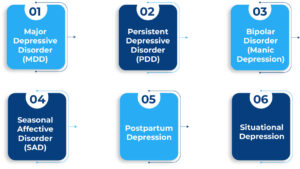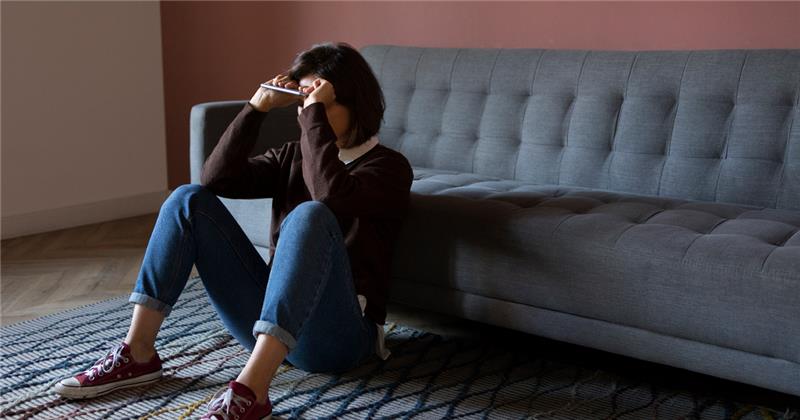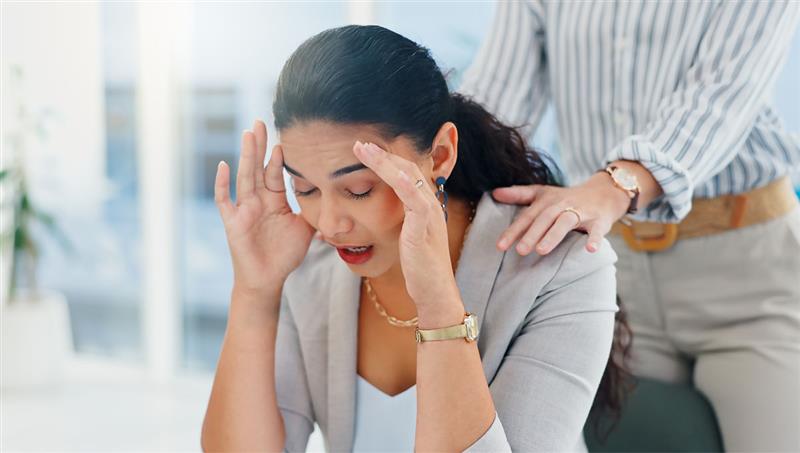Situational depression can feel overwhelming, but it’s important to remember that what you are experiencing is temporary. Healthy coping skills and family and friends will help you begin to feel better and cope with the stress more easily. Opening up about your emotions, self-care, and being in touch with people you love can make a great deal of change.
Over time and as your situation improves, your mood will lighten up, and you will be reading to enjoy life once again. Keep in mind that rough times can be overcome and that even in hard times, one can bear them when one has the right support. Read on and learn more about situational depression treatment, its signs and causes, and types. Stay with us till the end of the article and get valuable information!
What Is Situational Depression?
Situational depression, also known as adjustment disorder with depressed mood, occurs following a significant life event or during a stressful period. The symptoms can consist of mood swings, feelings of despair, loss of energy, and concentration. Therefore, most individuals confuse it with major depression, but the difference between the two is that situational depression is not permanent. It may improve after the individual learns ways of adjusting to the changes.
Furthermore, situational depression is also treated through health coping skills and, in extreme cases, medication. A conversation with a mental health professional will assist you with realizing your feelings, coping with stress, and cultivating strength. If you seek help and identify the signs early enough, it’s better to seek professional assistance and contact us at MAVA Behavioral Health!
Symptoms of Situational Depression
There are the following symptoms of situational depression:
- Helplessness or hopelessness, or being overwhelmed
- Loss of interest in daily life or hobbies
- Difficulty sleeping or excessive sleeping
- Inability to focus/decision making
- Loss of appetite and weight gain or weight loss
- Being anxious, restless, or irritable
- Retreat of the family, friends, or social life
Causes Situational Depression
The following are the usual causes of situational depression:
- The death of someone who is a close relative
- Breakup or divorce, or serious relationship issues
- Loss of job, economic pressure, or hard shifts in careers
- Changing the city, school, or workplace
- Failing school/study pressure
- Natural calamities or disasters, or trauma exposure
- Constant family or social disagreements
- Great stress as a result of unforeseen challenges in life
Types of Depression

1. Major Depressive Disorder (MDD)
It creates severe depression, loss of interest in things, tendency to become slow and not able to concentrate. People may experience sleeping, feeding, and general living problems. Without treatment, it can take weeks and months to develop. Thus, the use of therapy, alteration of lifestyle in life and usage of anti-depression medications is a common mode of treatment.
2. Persistent Depressive Disorder (PDD)
It is a form of depression commonly known as dysthymia and lasts two years or more. The symptoms are less serious than those of major depression but are persistent. People may end up feeling desolate, sluggish, demoralized, and unworthy.
3. Bipolar Disorder (Manic Depression)
Bipolar disorder is manifested through the highs (mania) and lows(depression). The symptoms have been said to be similar to those of major depression, which include sadness, fatigue, and hopelessness when the condition is depressed. A manic individual believes that they are overly active or driven. The mood fluctuations can disrupt work and interpersonal relations as well as daily living.
4. Seasonal Affective Disorder (SAD)
This depression-like disorder strikes at specific moments in the year, usually during the winter months, when the number of hours of sunshine is low. It includes an alteration of biological rhythms and vitamin D deficiency. Hence, touch can assist in light therapy, exercise, and prescription medication. The symptoms usually improve with the season change.
5. Postpartum Depression
Diversity exists with women after childbirth due to hormonal variation, pressure, and emotional changes. Depression, feelings of fatigue, mood changes, and an inability to attach to the baby result from it. Women experience postpartum depression at a much higher rate than ordinary baby blues, and it also lasts longer. It can disrupt the welfare of the mother and looking after the child. Treatments are successful and include support and therapy, and, where applicable, the use of antidepressants.
6. Situational Depression
Sometimes referred to as adjustment disorder, this form takes place when people have gone through stress such as divorce and loss of a job. It usually lasts temporarily and directly connects to a particular life change. They include sadness, restlessness, and loss of interest in day-to-day activities. It usually clears up after the individual adjusts, but unlike clinically ill depression.
Situational Depression Vs Clinical Depression
Situational Depression | Clinical Depression |
| Triggered by a specific life event such as loss, divorce, or major change | May develop without a clear external trigger; can be related to brain chemistry or genetics |
| Usually short-term, often improves within weeks to months | Long-term, lasting at least two weeks but often recurring or chronic |
| Sadness, stress, worry, and trouble focusing are linked to a recent event | Persistent sadness, hopelessness, loss of interest, changes in sleep or appetite |
| Often improves with support, coping strategies, and sometimes short-term medication | Requires ongoing treatment, including therapy and possibly long-term medication |
| Good, especially once the trigger is resolved | Varies; may require long-term management to prevent relapse |
How Long Does Situational Depression Last?
One can expect situational depression to invariably take anywhere between a month and a couple of months or less, depending on the pace at which the subject of depression readjusts in the face of the trigger. The symptoms of most cases start observing the trend of improving as you adjust to the new circumstances or learn some positive ways of handling your emotions. However, every individual will heal at their own pace, and this is why it can vary between times and people.
In addition, after the stress or sadness lasts more than six months, the problem can be long-term, suggesting that the depression has taken root, as is the case with clinical depression. Early intervention should be sought out, i.e., by discussing it with your friends, participating in support groups, or taking mental health precautions, to heal more quickly. Thus, there is also situational depression; this depression might be short-term and only needs adequate treatment so that you can carry on with your normal daily activities.
Situational Depression Treatment Options
i- Psychiatric Assessment for Situational Depression
A psychiatric assessment refers to an in-depth test undertaken by a mental health therapist to obtain information about the emotional, psychological, and behavioral well-being of an individual. It is a discussion of symptoms, personal history, health histories, and current life scenarios. The goal is to discover which state of mental health applies to the individual and how it affects everyday life. This procedure assists the physician or psychiatrist in acquiring a comprehensive understanding of the mental health of the patient.
The provider can also pose questions regarding the mood, thoughts, sleep, relationships, and coping skills during the assessment. There are also questionnaires/psychological tests. This step is significant because it personalizes the treatment to the individual’s needs, helping the person recover faster.
2- Depression Medication Management
Doctors may prescribe antidepressants to treat situational depression; they usually prescribe them when a depressive has normal activities and cannot self-treat or wait out the resolution of the depressive symptoms naturally. Doctors may prescribe antidepressants, e.g., SSRIs or SNRIs, to correct the brain chemicals that disrupt a mood.
Additionally, you must follow the physician’s recommendations for medication and learn about the side effects. Psychopharmaceutical treatment is a powerful mechanism to uplift a person’s mood and restore the usual emotional state with the administration of the right treatment plan in place.
End Note
At MAVA Behavioral Health, we offer situational depression effective treatment that includes medication management and psychiatric assessment. Our mental health professionals carefully evaluate the symptoms, emotional well-being, and personal situations of each patient, thereby developing a tailored treatment plan.
We also determine the causative factors and the most appropriate medications to be used in restoring emotional balance through psychiatric evaluation. With our humane approach, we make sure that the patients are provided with constant support on their way to recovery. With both emotional and biological views of depression, we enable people to stabilize and improve their quality of life, enabling them to get back on track with strength and a sense of hope.
FAQs
When does situational depression become clinical?
When feelings of depression extend beyond six months following a particular event or when they disrupt the normal life activities to a substantial degree, then it becomes clinical. When the emotional distress is converted into such symptoms as long-term depression, hopelessness, or loss of interest, it can be a sign of clinical depression.
What is the difference between situational depression and clinical depression?
Situational depression is a temporary response to a very concrete event in life, a loss, stress, or change, and tends to respond favorably after time or succor. Clinical depression, however, is a prolonged mental illness that can be present with no visible external stimulus.
What is another name for situational depression?
Situational depression is the other term used to describe this condition. It tells the emotional reaction to a major life stressor that results in sadness, lower energy, or hopelessness. This is usually a temporary state of events that disappears when the individual adapts to the change or holds a right support.
What is the best medication for situational depression?
The best medication to use when dealing with situational depression is not a single dose because the medication addresses the specific symptoms and the health history. Medications prescribed by the doctors are antidepressants, including SSRIs or SNRIs, that will help in balancing the mood.
Which of the following is a red flag for depression?
One of the most significant alarm bells of depression is thoughts of self-harm or suicide, which should not be ignored and treated. Other red flags are feelings of great hopelessness, isolation, and failure to conduct the daily routine. Early detection of such symptoms may allow timely help and treatment.









